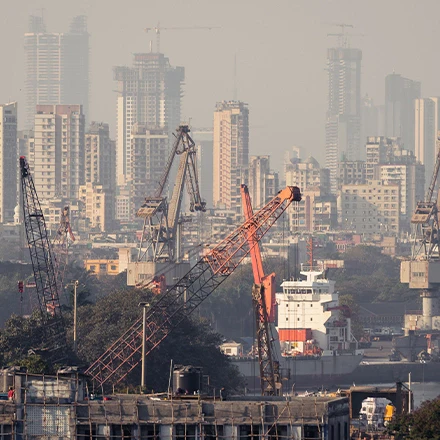A thick dark blanket of smoke covers the cities, as fires engulf the forests. Globally, wildfires have drastically increased in the last couple of years. Due to the changing climate with a warmer world, wildfires have become more and more frequent. Last year, the world witnessed major wildfires across the world. From Australian bushfires and California wildfires to the forest fire in Similipal, India. The cause of the wildfires may be natural due to the increasingly warm and dry air. However, recently human-caused forest fires have been increasing at an alarming rate.
Wildfires not only endanger the ecology and associated ecosystems but also emits tremendous amounts of harmful air pollutants. The air pollution due to such episodes is very difficult to control and monitor given the scale of the source. Air pollutants easily get transported to nearby cities and towns leading to serious health issues. Efficient low-cost ambient air quality monitors such as Polludrone can be deployed to issue warnings and take timely preventive measures to ensure minimum damage.
The changing Wildfires
Recent studies show that during the worst wildfire years, in the USA, emissions due to the wildfire accounted for half of all the air pollution. Experts believe that the wildfires are now reaching regions that remained unharmed in the past. The reason is believed to be driven by human factors: increasing temperature, land conversions, etc.
Recent studies show that during the worst wildfire years, in the USA, emissions due to the wildfire accounted for half of all the air pollution. Experts believe that the wildfires are now reaching regions that remained unharmed in the past. The reason is believed to be driven by human factors: increasing temperature, land conversions, etc.
When coupled with another study stating that the forest fires are moving more and more towards the city, the situation worsens. With already questionably poor air quality in the cities, wildfires worsen the scenario. The wildfires occurring near the cities are termed ‘Urban Fires”. The smoke reaching the cities may get trapped due to adverse meteorological conditions resulting in smog. This may lead to a major air pollution episode similar to the ‘Los Angeles Smog’ threatening the lives of millions.
Effects of Wildfires on Air Quality
The poisonous plumes due to wildfires cause irritation to the eyes and respiratory tract which may also lead to respiratory diseases. The citizens of Orissa (India), California(USA), and Australia, had trouble breathing air due to the recent wildfires. According to a study, the common air pollutants due to wildfires including ozone, carbon monoxide, nitrogen dioxide, and particulate matter are linked to respiratory and cardiovascular diseases. The major concern here is the particulate matter of size 2.5 micrometer (PM2.5) which can easily penetrate the lungs and cause pulmonary diseases including lung cancer.
“Examining 14 years of hospital admissions data conclude that the fine particles in wildfire smoke can be several times more harmful to human respiratory health than particulate matter from other sources such as car exhaust.”
Researchers at Scripps Institution of Oceanography at UC San Diego
The forest fires in California proved to be fatal for the citizens in the nearby vicinity. The wildfires worsened the air quality in the area affecting the health of the citizens. It was observed in a study the number of patients admitted to hospitals for strokes and related conditions increased by 60% in the five weeks after the fires. The study also indicated a possible relation between poor air quality due to wildfires and an increase in the number of pregnancies lost during the upcoming weeks.
Monitoring Air Quality in such cities
The adverse and underestimated effects of wildfire smoke on the citizens compel us to increase the monitoring capacity, especially in such wildfire-prone cities. In India, the recent Similipal wildfires marked the weak ambient air monitoring network in India. As shown in the figure, there were no ambient air monitoring stations present in the cities that were most likely to be affected due to the wildfire.
Sometimes, the wildfire smoke reaching the cities may not be clearly visible to the citizens and acts as a silent killing smoke. A robust monitoring network using low-cost sensor-based devices such as Oizom’s Polludrone and Dustroid helps in monitoring the pollutants.
The data helps in generating alerts to the local citizens about the current air quality due to the wildfires. Polludrone measures all the air pollutants emitted due to wildfires with great accuracy and precision.
Oizom’s AI and dispersion analysis helps in generating heat maps and dispersion maps to track air pollution. The device is capable of monitoring air quality in adverse weather conditions and highly polluted areas. This makes the devices more suitable for monitoring the wildfires and air quality in the cities.






